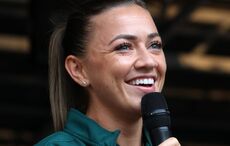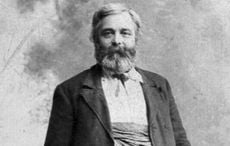The Boston Celtics and New York Knicks have come through the 2013 NBA Regular Season in different ways. The Celtics have endured injury after injury and problem after problem to secure the seventh overall seed in the Eastern Conference, while the Knicks have enjoyed their trip to the second seed behind only the Miami Heat.
This is very much the inverse of what recent history has told us about these franchises.
For only the third time during his tenure, Doc Rivers' Celtics didn't finish first in their division. In fact, this year's third place finish was the first below the top since the 2006-07 season. Conversely, the New York Knicks hadn't won the Atlantic Division since all the way back in the 1993-94 season.
The Celtics and Knicks last faced off against each other in the playoffs in 2011. Except back then the Celtics entered the first round as the third seed, with the Knicks being the lower sixth seed. This year the Knicks will enjoy home-court advantage as they face the seventh seed Celtics as the second best team in the Eastern Conference.
In 2011, the Celtics bounced the Knicks out with ease after just four games.
Both teams were very different back then. The Knicks still had Carmelo Anthony and Amare Stoudemire, but neither could play with each other while Chauncey Billups was still adjusting to his role within the team. Starting Landry Fields and Ronny Turiaf together without an real impact players coming off the bench would make this an easy series for the impressive Celtics.
The Celtics weren't at their peak in 2011, but they were a superior team to what they currently boast. Kevin Garnett and Jermaine O'Neal were strong presences on the inside that could hurt the Knicks' soft center, while Ray Allen and Rajon Rondo led the attack from the perimeter. Only Paul Pierce remains in the same position today, at small forward, and even he may be stretched to move out of position in this series.
Since then, the Knicks have developed a brand new identity. Long gone are Billups, Turiaf, Fields and the misfit cast of reserves. Those departed roles have been filled with more athletic and more talented players for the most part. Stoudemire no longer starts, and is a bit-part player when fully healthy(which he is not currently). Billups and Turiaf play for the Los Angeles Clippers now, which means that the Knicks essentially have a whole new lineup.
However, they no longer have a specific starting group. With the roster turnover, the Knicks have created a deep rotation that allows them to ask different questions of their opposition from day to day. A rejuvenated Jason Kidd and dynamic Raymond Felton may start on the perimeter, but they can give way to the energetic Iman Shumpert and matured J.R. Smith at any moment. In fact, with Shumpert's athleticism and the Knicks' style of play, they often keep three of the four guards on the court at the same time.
With that wealth of quality guard play, the Knicks can move Carmelo Anthony around like a chess piece. He has excelled at times as the power forward in a smaller lineup, but he can also remain at small forward with the intimidating Tyson Chandler at center inside of the equally intimidating Kenyon Martin or unorthodox Steve Novak.
Even in the playoffs, the Knicks won't feel pressed to shorten their rotation. Anyone from Kidd, Felton, Shumpert, Smith, Pablo Prigioni, Chris Copeland, Martin, Chandler, Anthony, Novak, Stoudemire(if healthy), Rasheed Wallace or Marcus Camby could be on the court at any given time depending on the situation.
By comparison, that makes the Celtics' rotation a dire one.
Despite entering this season with a long list of guards who could contribute, torn ACLs for Rajon Rondo and Leandro Barbosa quickly took away any depth that the Celtics could boast of. A fully healthy Avery Bradley is invaluable, but surpassed the limited Courtney Lee and unimpressive Jason Terry, the Celtics can't really look to anyone else at this point of the year. Jordan Crawford has proven to be a very talented player at times since coming over from the Washington Wizards, but it's a stretch to trust him in the playoffs.
Terrence Williams could be the player who Doc Rivers looks to in a tight minute or two, but they likely wouldn't want to if they could avoid it.
The Celtics' lack of guard depth will push them to play Paul Pierce more and more, as well as the inconsistent Jeff Green. Green and Pierce can both play between shooting guard, small forward and power forward if need be, but it will be a taxing affair for them physically.
After rookie Jared Sullinger imposed himself on the league, the Celtics were confident early on in the regular season with he and Kevin Garnett starting. However, a back injury took Sullinger away for the season while fellow rookie Fab Melo has barely been on the court. Shavlik Randolph and Brandon Bass will be looked to when Garnett goes out in the playoffs. Neither would be considered adequate playoff players by any means.
This series is going to severely stretch the Celtics' roster and could prove too much for their rotation. Much like the Knicks were in 2011, the Celtics are completely reliant on two or three star players to carry them through, whereas today's Knicks resemble more of the 2011 Celtics than the 2011 Celtics do.
Everyone remembers how that ended...




Comments